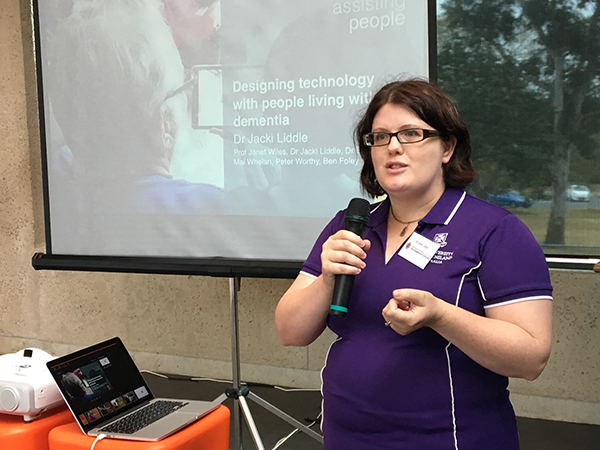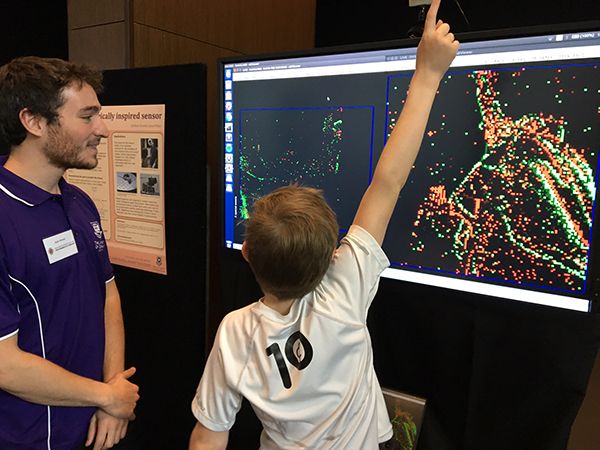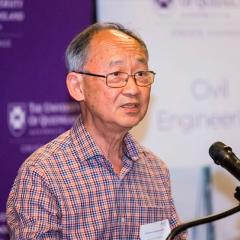The ARC Centre of Excellence for the Dynamics of Language (CoEDL) hosted the UQ Showcase at the UQ Art Museum on 27 September 2017, highlighting the cutting-edge work the Centre is undertaking in the areas of social technology (robotics); technology to support people living with dementia; transcription and linguistic technology, and the documentation of Indigenous languages.
Linguist, media researcher and political activist Dr Daniel Dor, from Tel Aviv University, delivered the keynote address, before attendees were invited to explore the current exhibition at the UQ Art Museum, which is being held in conjunction with the 'Still in my mind: Gurindji experience, location and visuality' exhibition.
Chief Investigator Professor Janet Wiles opened the day’s workshops and then handed over to the Florence Project team who are working closely with community to develop assistive technology for people living with dementia. They described how a simple app for a device like a mobile phone might assist someone living with dementia to have an everyday conversation.
Team project manager Peter Worthy, and other team members including Jacki Liddle, spoke about the project’s aspirations of breaking ground in terms of designing the project in partnership with those who will use it. The project has a reference group of people from the community who are both living with dementia and supporting family with dementia and whose job it is to guide the team.

Visitors were also brought up-to-date with the Transcription Acceleration Project (TAP) by Ben Foley. Ben and the team are exploring new ways to help linguists overcome the transcription bottleneck, which is the lengthy process of translating and annotating field recordings.
Post-doctoral researcher Gautier Durantin gave some results of a recent survey of 51 CoEDL linguists, which indicates that linguists with more experience in the field do not necessarily find transcribing easier, and that linguists who adopt some helpful technologies find transcription easier, but not faster.
There was also some fun for the children who turned up to the day’s events. They were invited to play and learn with Opie, the child-friendly robot (shown above giving a high-five to Gabriella Rossington), and to experiment with new robot technologies being developed in the CoEDL UQ social robotics lab.

Chief Investigator Dr Felicity Meakins presented joint research with Myfany Turpin and Clint Bracknell into popular indigenous songlines that demonstrated how widely they had been shared and accurately transmitted between indigenous peoples over the past 100 years.
These songlines, originating in the Western Desert region of Australia, had been first described in writing in 1913 by anthropologist Daisy Bates and then periodically after that by a series of anthropologists and linguists working across Australia. By searching the archives, it could be demonstrated that these songlines had been accurately and successfully shared by numerous indigenous peoples, so that they were now adopted and owned by a considerable number of nations, from the top of the Northern Territory to the bottom of South Australia.
The day concluded with a public lecture by Dr Daniel Dor. Dr Dor is from the Department of Communication at Tel Aviv University and is the author of The Instruction of Imagination: Language as a Social Communication Technology. His book describes a new conceptual framework for the description, analysis and explanation of human language as a socially-constructed communication technology, designed by cultural evolution for the specific function of the instruction of imagination. He spoke about the evolution of language as a tool to bridge the human experiential gap, a way of communicating through a common ground that never completely reflects either party’s experiential world but is somewhere in between the two.



